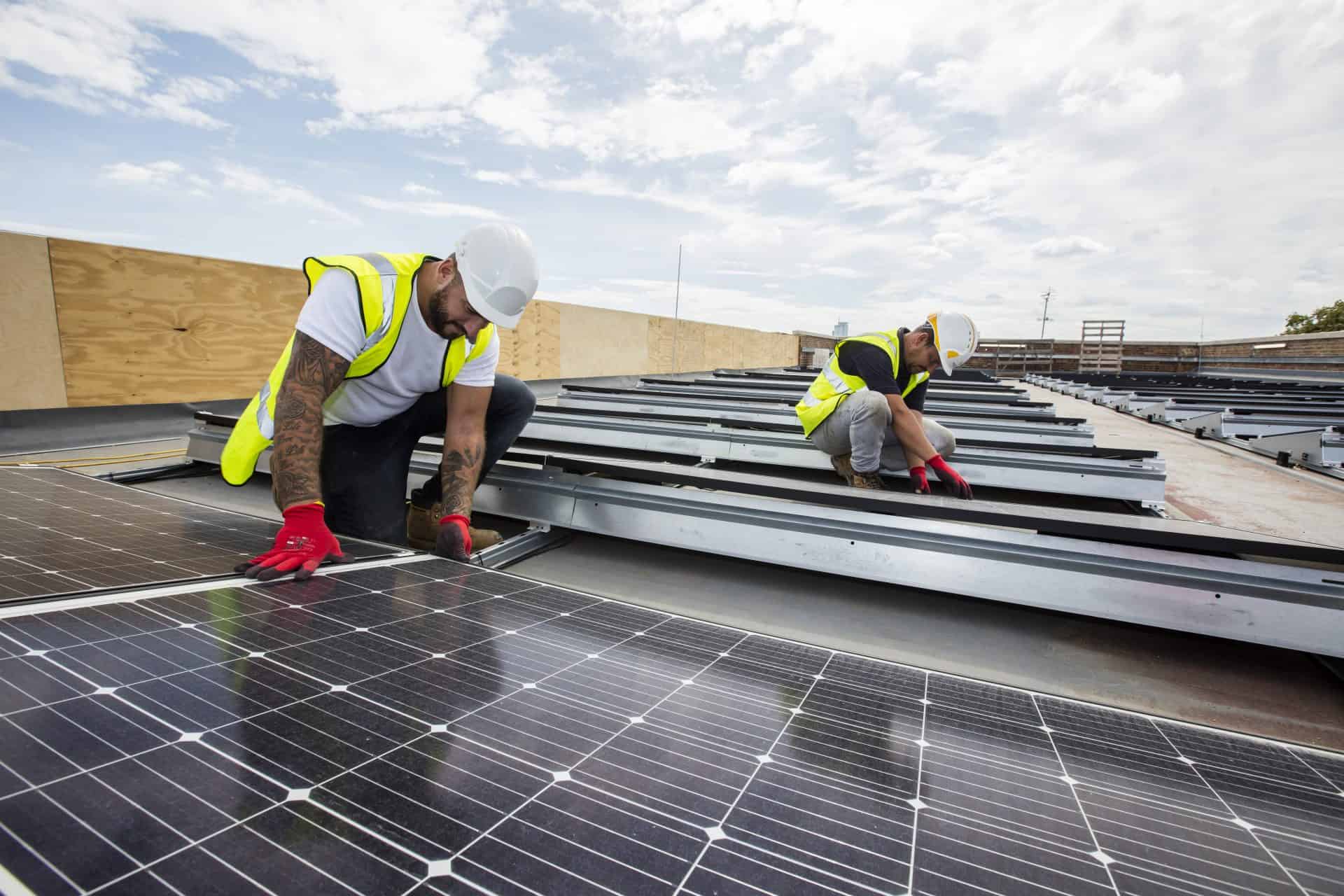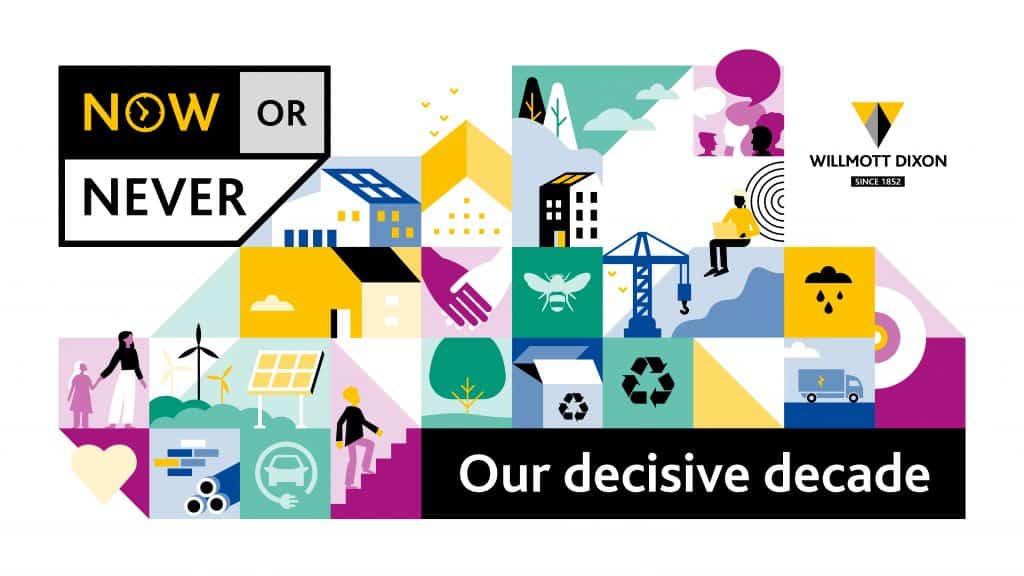Simon Tranter, our Head of Sustainability shares his views on net zero, what it is and advice to customers

Simon Tranter, Head of Sustainability Willmott Dixon Interiors
For me net zero carbon should be less about calculation and more about communication. One of the first insights to establish with prospective customers is understanding their company values and specific drivers: how could a fitout or refurbishment project strengthen these drivers and reflect their values?
It’s important to have these conversations very early on, otherwise, opportunities are lost.
Of course, there is tension between capital cost, operational cost and carbon cost, but the sooner decision-makers understand what the options are and what is possible within budget and programme constraints, the more value we can add – to the project, our customers, and the wider environment.
What is net zero?
We think about net zero carbon in two phases: embodied and operational. Willmott Dixon, as a group, has set itself targets for both phases. For operational carbon, we want all our projects to be net zero by 2030. For embodied carbon, the target is 2040.
To hit these ambitious targets, we will have to do things differently. And that will mean finding customers who want to come with us, and our supply chain, on that journey.
When it comes to operational carbon, the first step is to design energy use as far as possible. That’s a taller order for an existing building than for a brand new one because the designers must work with the building’s configuration and sometimes with existing systems. It can be complex to thrash out what is desirable, what is possible and what is viable for the customer.
Once energy use has been minimised at the design stage, the next ambition should be to use as much on-site renewable energy as possible, with any residual energy demands being met by off-site renewable energy.
Embodied carbon is a tougher nut to crack. Although transport and energy use during the construction process contribute to embodied carbon, by far the biggest proportion comes from the manufacture of the materials.
It is worth noting that re-using an existing building by refurbishing it involves far less embodied carbon than demolishing a building and starting again. The foundations and frame of a building account for the biggest proportion of its embodied energy.
As operational carbon in buildings continues to fall, there will be more focus on reducing the embodied carbon of building materials, alongside tools that will help us assess different options at the planning and design stages. EPD (Environmental Product Declaration) certificates, which include information on the embodied carbon of a material or product, will become more important, providing data that can be plugged into BIM models to help make comparisons and decisions.
A final and vital piece of the net zero picture is verification. It is vital to go back and check whether the building is performing as predicted once in operation. It may be that changes can be made to improve a building’s energy efficiency, whether tweaks to M&E systems or people’s behaviours. Lessons learned can also be transferred to other parts of a customer’s portfolio and to future projects.
Opportunity to innovate
The Covid-19 pandemic is forcing companies to re-think their workspaces. Alongside environmental considerations, there is the need to think about how spaces can be configured to optimise health and wellbeing. There’s a growing understanding about how design-for-wellness is part of the sustainability jigsaw.
At Willmott Dixon Interiors, we are currently working on a series of templates that will set out what design for sustainability and wellbeing looks like across a range of building types. The goal is to improve the way we communicate during those early conversations with customers, to make it easier to explain what is possible and what they can expect.
My advice to customers is to be bold from the outset. Showing commitment to sustainability and a will to innovate sends out a strong message about a company’s corporate commitments – to employees, customers and competitors. Whereas just following the status quo says something else…
READ OUR STRATEGY:

